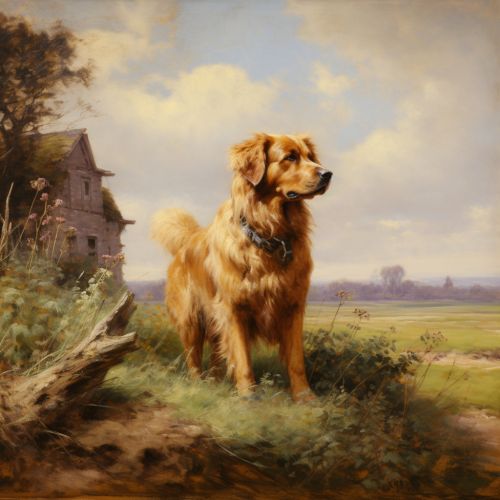Dog
Introduction
The dog (Canis lupus familiaris or Canis familiaris) is a domesticated descendant of the wolf. The dog derived from an ancient, extinct wolf, and the modern grey wolf is the dog's nearest living relative. The dog was the first species to be domesticated by hunter–gatherers more than 15,000 years ago, which predates agriculture. Their long association with humans has led dogs to be uniquely adapted to human behavior, leading to a large number of domestic individuals and the ability to thrive on a starch-rich diet that would be inadequate for other canid species.
Evolution
Dogs were domesticated from wolves around 15,000 years ago. During this time, certain dogs, coming into contact with humans, began to adapt to human foodstuffs, gradually coming into a symbiotic relationship with humans. Over time, these dogs evolved into a separate species, the dog, which is distinct from the wolf. This process of domestication was likely a gradual process that occurred over centuries.
Classification
The dog is a member of the genus Canis, which forms part of the wolf-like canids, and was the first species and the only large carnivore to have been domesticated. The dog and the extant gray wolf are sister taxa, as modern wolves are not closely related to the population of wolves that was first domesticated.
Anatomy and Appearance
Dogs come in a remarkable variety of sizes, ranging from tiny breeds weighing as little as 2 pounds to large breeds weighing up to 200 pounds. Despite this wide range in size, all dogs belong to the same species. Dogs have a variety of coat colors, patterns, lengths and textures. In many breeds, coat colors and patterns are strictly regulated by breed standards of the various kennel clubs.


Behavior
Dogs are highly social animals that require interaction and companionship. They communicate using a complex language of body signals that reflect what they are thinking and feeling. They also communicate vocally, though the specific meanings of the vocalizations are not well understood. Dogs are known for their loyalty and willingness to please their owners, which makes them highly trainable.
Health
Like all mammals, dogs can suffer from a variety of health problems, including infectious diseases, parasites, and chronic illnesses. Regular veterinary care, good nutrition, and adequate exercise are critical components of dog health. Some breeds are prone to certain genetic conditions such as hip dysplasia, heart disease, and certain types of cancer.
Role in Society
Dogs have played a crucial role in human society for thousands of years. They have been used for hunting, herding, and protection. They have also served as companions, and their ability to be trained has led to their use in search and rescue operations, detection of illicit substances, and as service animals for the disabled.
Breeds
There are hundreds of different breeds of dogs, each with its own unique appearance, temperament, and history. These breeds range from the tiny Chihuahua to the massive Saint Bernard, and include both purebred dogs and mixed-breed dogs. Each breed has its own specific needs and characteristics, making it important for prospective dog owners to research the breed that best fits their lifestyle.
